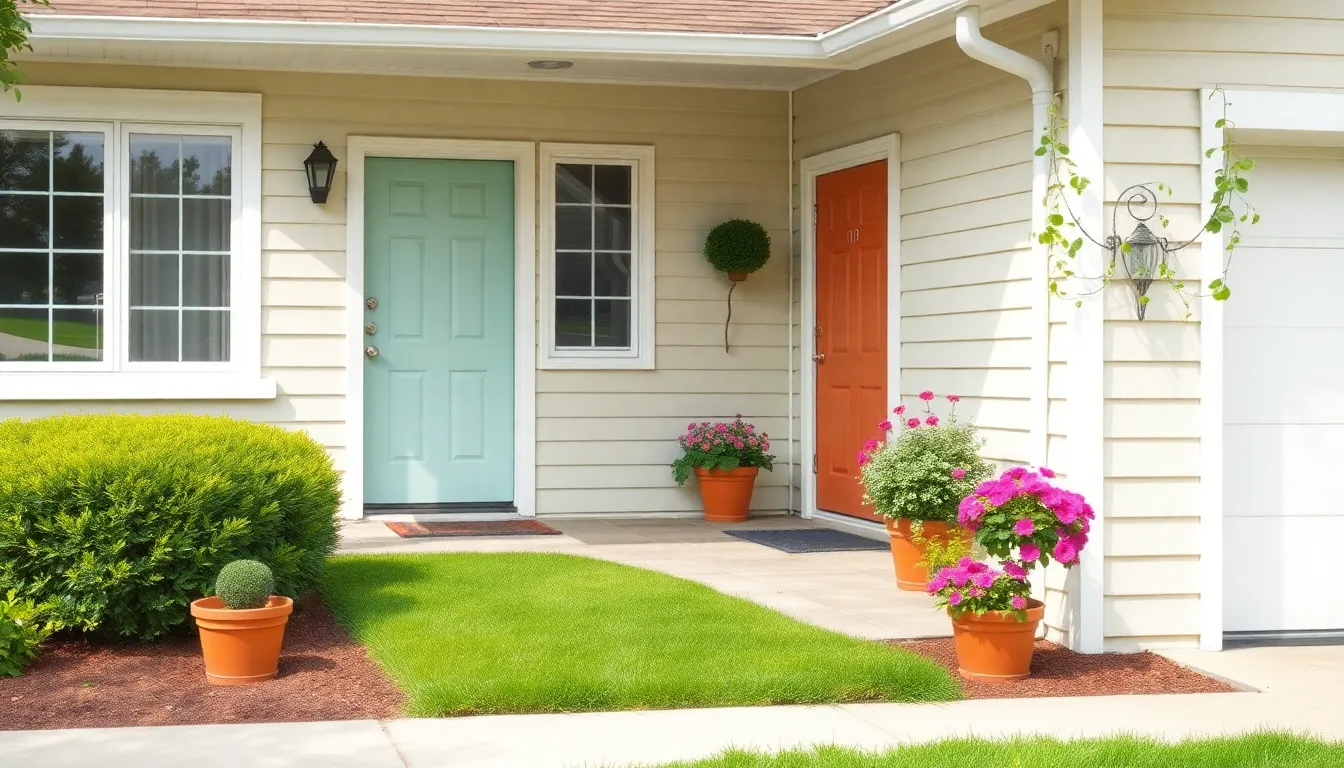Renting out a home can feel like trying to solve a Rubik’s Cube blindfolded. With the right moves, it can turn into a colorful success. But without a strategy, it might just leave you feeling dizzy and frustrated. Whether you’re looking to make some extra cash or simply need to move, knowing the ins and outs of renting is essential.
Table of Contents
ToggleUnderstanding the Rental Market
Understanding the rental market is crucial for successful home renting. Knowledge of local trends and pricing can guide decisions effectively.
Researching Your Local Market
Research provides essential insights into local rental trends. Utilize online platforms to compare rental listings and gauge demand in specific neighborhoods. Local real estate agents can offer valuable expertise regarding shifts in market dynamics. Analyze vacancy rates and rental seasonality patterns in the area. Gathering data helps in recognizing competitive advantages for a successful rental experience.
Setting Competitive Rental Prices
Setting competitive rental prices requires consideration of various factors. First, assess similar properties in the area to determine average pricing. Data from local listings plays a significant role in finding the right price point. Secondly, account for property features, such as size, amenities, and condition, to justify pricing adjustments. If the price aligns with market expectations, it attracts potential tenants quickly. Engaging a property management professional may provide an objective pricing strategy based on detailed market analysis.
Preparing Your Home for Rent

Preparing a home for rent involves several critical steps. Ensuring it stands out in the market requires attention to detail and thorough planning.
Cleaning and Maintenance Tips
Cleaning plays a vital role in attracting tenants. Start by decluttering spaces to create an open and inviting atmosphere. This process should include deep cleaning carpets, wiping down surfaces, and scrubbing bathrooms. Inspect appliances and replace any that are malfunctioning. Regular maintenance checks on plumbing, heating, and cooling systems help demonstrate a commitment to quality. Address any visible repairs, such as chipped paint or leaking faucets, to maintain a polished appearance. Keeping a home well-maintained reduces future tenant complaints while increasing rental value.
Enhancing Curb Appeal
First impressions count in real estate. Improving curb appeal requires focusing on the exterior of a home. Mowing the lawn and trimming bushes add neatness. Freshly painted doors and windows enhance the overall appearance. Adding potted plants or seasonal flowers creates warmth and vibrancy. Ensure outdoor lighting functions correctly to improve safety and ambiance during evening viewings. Cleaning gutters and ensuring walkways are clear elevates the home’s attractiveness. Simple upgrades can lead to higher tenant interest and increased rental rates.
Creating a Rental Listing
Creating an effective rental listing involves clear communication and compelling visuals. Focus on providing essential details that attract potential tenants.
Writing an Effective Description
Ensure the description highlights key features of the home. Begin with the number of bedrooms and bathrooms, then include the size in square feet. Mention additional amenities like a garage, garden, or proximity to schools and public transport. Using descriptive language, convey the unique aspects that set the property apart. Keep the tone professional yet inviting. It’s vital to be honest about any limitations to avoid misunderstandings. Including nearby attractions or lifestyle benefits can enhance appeal. Aim for a concise yet informative narrative that entices applicants while providing a clear picture of the property.
Taking Quality Photos
Photos serve as the first impression of the rental property. Capture the exterior and interior from multiple angles to showcase the layout. Utilize natural light for bright images, avoiding overly dark or blurry pictures. Highlight key areas, such as the living room and kitchen. Clean and declutter spaces before shooting to create an inviting atmosphere. Consider staging rooms to illustrate their potential. Add a few lifestyle shots that depict the area or nearby attractions. A well-rounded selection of images can significantly increase interest in the listing.
Screening Potential Tenants
Screening potential tenants is vital for finding reliable renters. This process requires careful evaluation to ensure a positive rental experience.
Application Process
Start by having interested tenants complete an application form. The application should gather essential information, like their rental history, employment details, and references. A thorough application provides insight into their background and reliability. Set a deadline for submissions to keep the process efficient and organized. Review all applications carefully, focusing on details that indicate responsible behavior and financial stability.
Conducting Background Checks
Conducting background checks is a crucial step in tenant screening. This check should include credit history, criminal records, and rental history. Verify previous landlord references to gauge the tenant’s behavior and payment history. A credit score of at least 620 typically indicates financial reliability. Remember to comply with Fair Housing laws during this process. Transparent communication with applicants about the background check will foster trust and ensure fairness.
Lease Agreements and Legal Considerations
Lease agreements and legal considerations play a crucial role in the renting process. Understanding these elements ensures a smooth rental experience for both landlords and tenants.
Essential Lease Terms
Essential lease terms include duration, rent amount, and security deposits. Specify the lease duration, commonly ranging from 12 to 24 months. Indicate the monthly rent clearly, along with due dates and accepted payment methods. Specify the security deposit amount, often one month’s rent, and outline conditions for its return. Including pet policies, maintenance responsibilities, and rules regarding property alterations further clarifies expectations. Lastly, ensure tenants acknowledge lease termination procedures to avoid misunderstandings.
Understanding Tenant Rights and Responsibilities
Understanding tenant rights and responsibilities fosters a respectful rental relationship. Renters must know their rights to a habitable living space, free from significant maintenance issues. They should respect property rules, including noise guidelines and designated areas. Furthermore, they must pay rent on time and communicate with the landlord about any repairs needed. Landlords carry the responsibility of maintaining the property and complying with local housing laws. Awareness of these rights and responsibilities cultivates trust and reduces potential disputes throughout the rental period.
Managing Your Rental Property
Managing a rental property involves effective communication and proactive maintenance strategies to ensure tenant satisfaction and protect the investment.
Communication with Tenants
Effective communication with tenants fosters positive relationships and reduces misunderstandings. Regular check-ins, either through emails or phone calls, keep tenants informed about property matters. Promptly addressing tenant inquiries demonstrates professionalism and builds trust. Establishing clear channels for reporting issues, like a dedicated phone number or email address, encourages proactive engagement. Setting expectations regarding response times can help ensure tenants feel valued. Transparency during lease terms, including any changes, strengthens the relationship further. Overall, open lines of communication create a comfortable living environment, enhancing tenant retention.
Handling Repairs and Maintenance
Properly addressing repairs and maintenance keeps properties in good condition and prevents minor issues from escalating. Scheduling regular inspections helps identify potential problems before they impact tenants. Swiftly responding to repair requests shows commitment to tenant satisfaction. Identifying a reliable team of maintenance professionals simplifies the process of handling repairs. Documenting all maintenance activities, including details of requests and actions taken, provides valuable records for future reference. Prioritizing urgent repairs protects tenant safety and demonstrates responsibility. Implementing a clear maintenance request system ensures timely resolutions, promoting a positive rental experience.
Renting a home can be a rewarding venture when approached with the right strategy and knowledge. By understanding the rental market and preparing the property meticulously, landlords can create an inviting space that attracts quality tenants.
Effective communication and thorough tenant screening are essential to ensure a smooth rental experience. Establishing clear lease agreements and maintaining proactive management practices further enhance tenant satisfaction.
With careful planning and attention to detail, landlords can navigate the complexities of renting and ultimately enjoy the benefits of a successful rental property.





